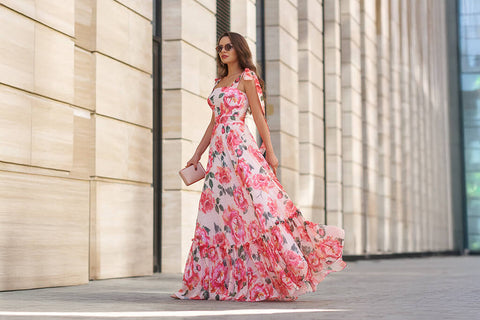- Lightroom Presets
- Mobile Presets
-
Photoshop
-
Learn
-
Support
-
Install
- Best Sellers
- Blog
By Anna Gay on | No Comments

Adding a subtle vignette to your image is a great way to bring more focus to your subject. This effect can be achieved in-camera but is more often done during post-processing.
What is a vignette, you ask?
Technically speaking, vignettes are caused by distortion or light "fall off" from your lens, which looks like a darkening or shadow at the corners of your image. As I mentioned before, this technique can be beneficial in drawing your viewer's focus towards your subject in the center of your photo.
In some cases, you may not want to have a vignette in your images: for example, if you use a solid white background, you will probably want the white to remain consistent throughout the photo, with no shadows or grays in the corners of the image.
If, however, your image would benefit from a vignette, you can easily recreate this lens effect in Photoshop.
In this tutorial, I will show you how to quickly add a vignette in Photoshop using my two favorite methods:
Step 1. Be sure that your foreground color is set to black because we will be using black as the color for our vignette:

Step 2. Apply a vignette using the Gradient Fill, select Layer>New Fill Layer>Gradient:

Step 3. Press okay here:

Step 4. Check the box next to Reverse to place the vignette on the outside of the image.
Step 5. Make sure that the color goes from transparent to solid black in the box next to the word Gradient. Then, set the Style to Radial. You can change the Angle settings, but generally, 90 degrees works perfectly. You can also set the Scale to adjust the intensity of the gradient. Subtle is usually best for vignettes, so I increased the Scale to 347%.

Step 6. Once you add your Photoshop vignette, your image will be slightly darker on the edges, and more than likely, the effect will be too heavy. To blend the vignette and for it to appear more natural, change the Blending Mode of your layer to either Soft Light or Overlay, and reduce the opacity:

Here is the before/after using the Gradient Fill tool. As you can see, the effect is minimal, which is generally what you want to strive for with a vignette. You do not want the vignette to stand out at all; you simply want it to make your subject pop!

Another great way to add a vignette in Photoshop is with the Lens Correction Filter.
Step 1. Once you have opened your image in PS, duplicate the Background layer, then select Filter>Lens Correction:

Step 2. Make sure that all of the auto-correction boxes are UN-checked. We only want to add a custom vignette and are not correcting other lens issues here:

Step 3. Click on the Custom tab next to the Auto-Correction tab.
Step 4. Take a look at the Vignette module under Custom:

For this image, I changed the Vignette settings by pulling the slider to the left, but I also brightened the center by dragging the Midpoint slider to the right. You will need to play around with the two, as the settings will vary from image to image. Sometimes, you will need to brighten your midpoint to compensate for the edges of your image, but it differs from image to image.
If you feel as though the vignette is too heavy, you can either reduce the opacity of your duplicated layer, or you can select Fade Lens Correction:

Here is a before and after of the image with the vignette created using the Photoshop Len Correction Filter:

As you can see, this Photoshop vignette is super-subtle, which is generally what you want. If you compare the top-right corners of each image, you can really see the vignette in the after example.
If you are interested in actions that will help you create vignettes in Photoshop, check out our PURE Color Workflow.
Do you have any questions or comments about adding a Photoshop Vignette? Leave us a comment below - we would LOVE to hear from you! And PLEASE SHARE our tutorial using the social sharing buttons (we really appreciate it)!




Anna Gay is a portrait photographer based in Athens, GA and the author of the dPS ebook The Art of Self-Portraiture. She also designs actions and textures for Photoshop. When she is not shooting or writing, she enjoys spending time with her husband, and their two cats, Elphie and Fat Cat.

Comments